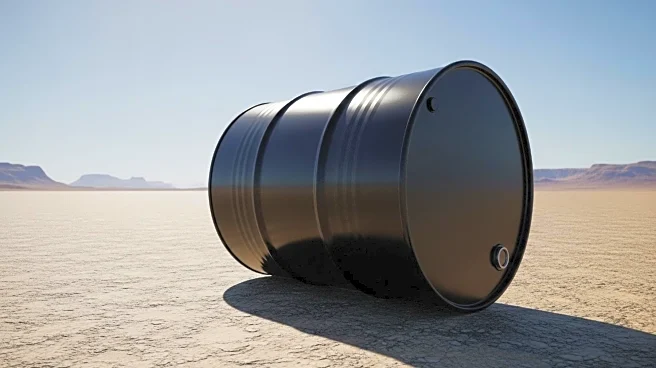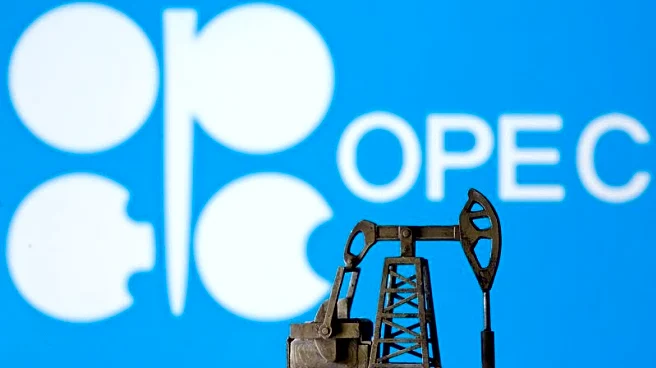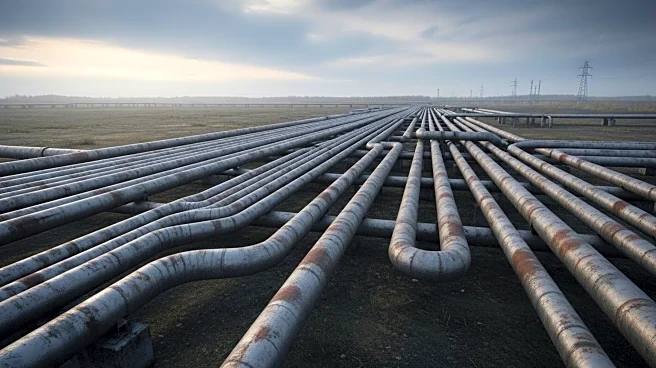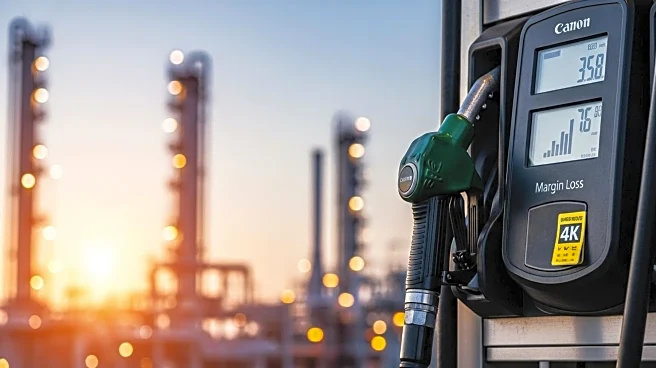What is the story about?
What's Happening?
The U.S. Energy Information Administration (EIA) has reported an increase in crude oil inventories by 1.8 million barrels for the week ending September 26. This follows a previous decrease of 600,000 barrels. The current commercial stockpiles stand at 416.5 million barrels, which is 4% below the five-year average for this time of year. The report also highlighted a rise in motor gasoline inventories by 4.1 million barrels, despite a decrease in average daily gasoline production to 9.3 million barrels. Middle distillate inventories saw an increase of 600,000 barrels, with production decreasing to 5 million barrels daily. The data release from the EIA comes after the American Petroleum Institute (API) suggested a contraction in crude oil inventories by 3.674 million barrels. The market reacted with crude prices trading down, with Brent and WTI both experiencing declines.
Why It's Important?
The increase in crude oil inventories has significant implications for the U.S. oil market and global oil prices. The rise in stockpiles suggests a potential oversupply, which can lead to lower oil prices. This is critical for the U.S. economy, as it affects the profitability of domestic oil producers and can influence gasoline prices for consumers. The decrease in gasoline production and the increase in inventories may indicate a shift in demand dynamics, potentially impacting refineries and related industries. Additionally, the discrepancy between EIA and API reports highlights the complexities in inventory assessments, which can lead to market volatility.
What's Next?
Market participants will likely monitor upcoming EIA and API reports closely to gauge future inventory trends and adjust their strategies accordingly. The oil industry may need to consider production adjustments to align with demand and manage inventory levels effectively. Policymakers and economic analysts will also be attentive to these developments, as they can influence energy policy and economic forecasts. The ongoing fluctuations in oil prices may prompt discussions on energy independence and the strategic petroleum reserve's role in stabilizing the market.
AI Generated Content
Do you find this article useful?














